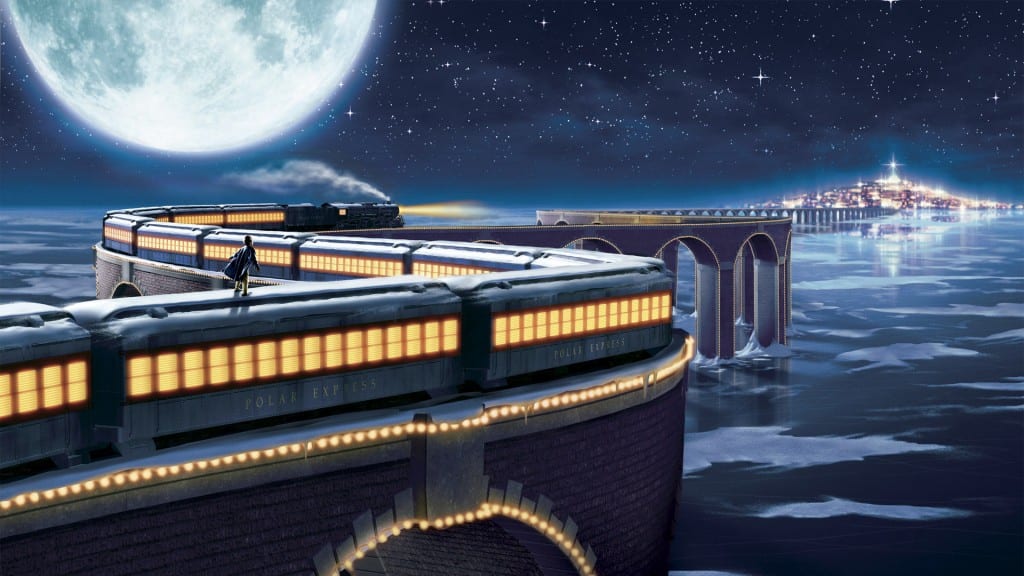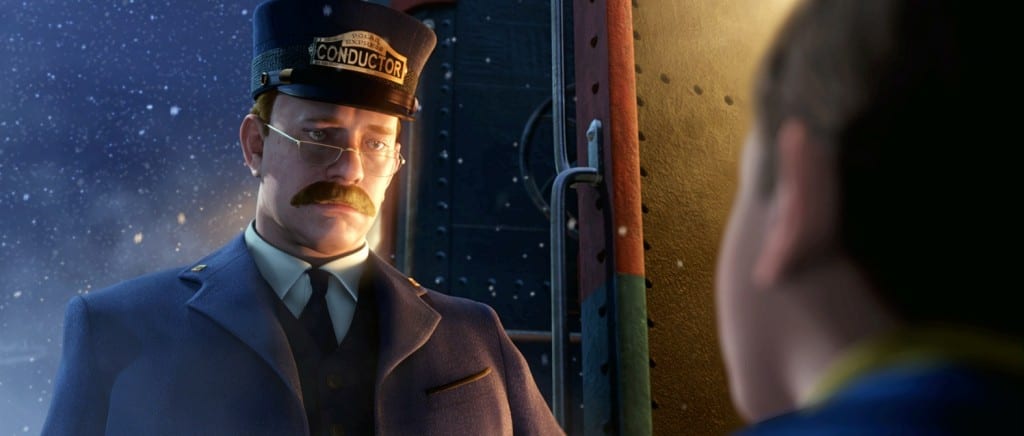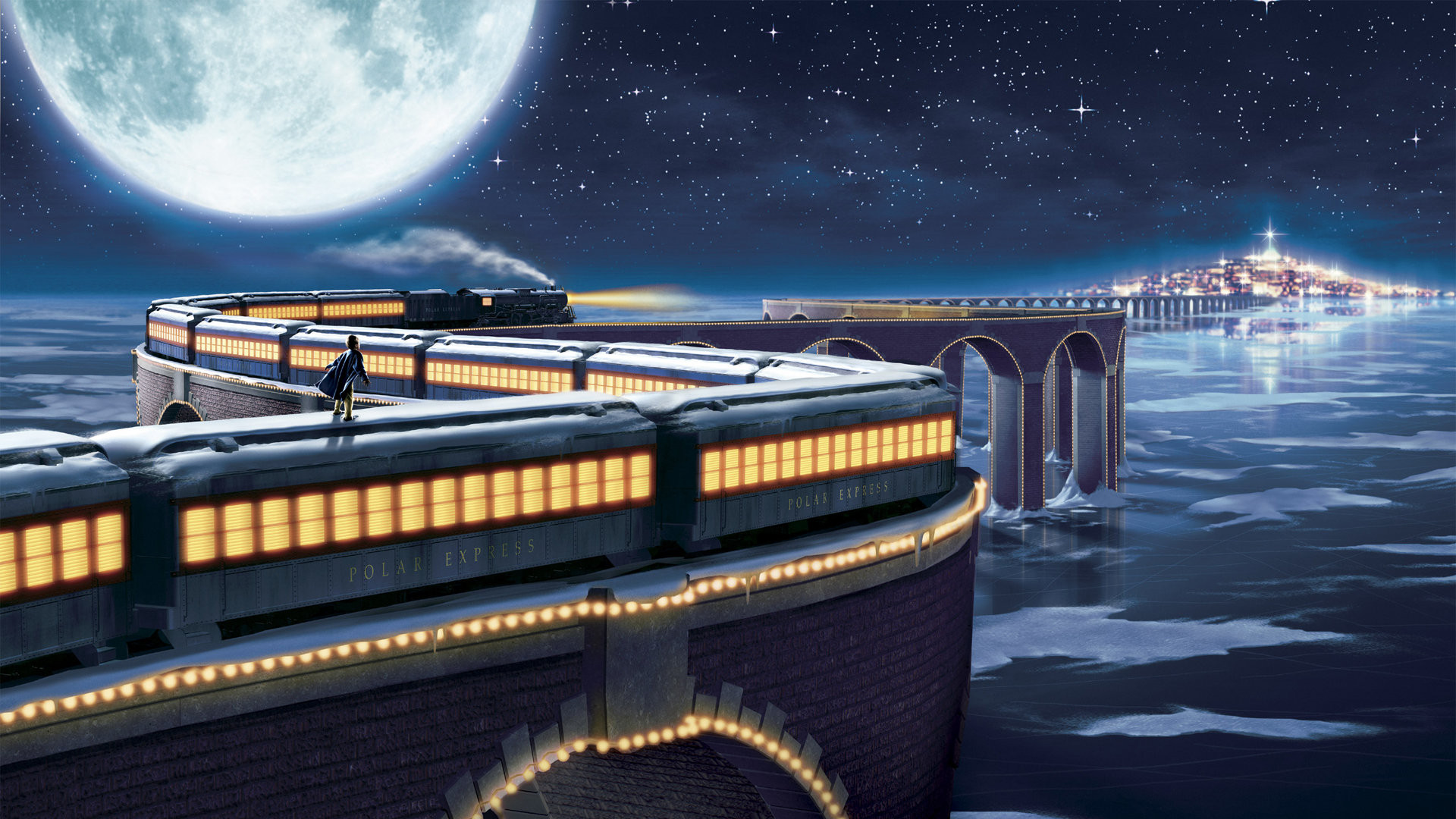Welcome to the Rotoscopers’ Twelve Days of Christmas! Every day until Christmas Eve, we’ll be taking a look at a holiday-themed piece of animation. Check back each day for a new review! *Disclaimer: There are spoilers in this article for ‘The Polar Express’ – proceed with caution.*
Well? Ya comin’? It’s Christmas Eve, and I know I’ll be listening for a certain train whistle in the distance when I go to sleep this evening. The Polar Express, released in 2004 when I was a mere ten years old, had a profound impact on my belief in Christmas magic. Computer animated and featuring extensive character performance capture, the film brings the audience along with a young boy who struggles to maintain his belief in Santa. When a magical train, and conductor Tom Hanks in a moustache, arrives at his doorstep, the boy takes a chance and joins several other lucky kids on the trip to the North Pole.

Based on a book by Chris Van Allsburg, Robert Zemeckis took the helm of Castle Rock Entertainment’s first animated film as director and screenwriter. The train itself, in both the book and film, is based on a real-life locomotive: the Pere Marquette 1225. For Van Allsburg, the 1225 was a play structure by Spartan Stadium, and an inspiration for illustration; for Zemeckis and the film crew, the PM 1225’s drawings and operating sounds became part of their Polar Express. That creation, to me, symbolizes the film itself: from pieces of familiar reality, we can find something new and just as real.

Seeing is Believing
The idea of “catching” Santa Claus in the act has probably always existed. The Polar Express immediately pokes at the audience’s need for proof, starting at that well-known moment in nearly everyone’s childhood, when doubts about Santa Claus begin to surface. First, the boy sees a shadow he believes to be Santa, only to find out it’s his father and sister. The quote from his parents when they reenter his room, believing him to be asleep, is incredibly telling: “an end of the magic.” Of course, that causes a little panic for our young protagonist, but all is not lost! Tom Hanks is on his way!

Once the trip gets underway, accompanied by lovely music from Alan Silvestri, the young boy meets a bitter hobo, who quickly drops the exact theme of the entire movie as he says, “Seeing is believing. Am I right?” Up until the end of the film, the audience will ask themselves if the hobo is, indeed, right. To take something on faith, and faith alone, is difficult for some and moved me when I was younger, as a child who was never raised in any particular religion. Faith in various deities often remains unwavering but, somehow, society reached a point where it’s expected to stop believing in Santa Claus – there’s no proof to support him, anyway. The Polar Express endeavors to stop our dependency on proof for intangible things that are irrefutably real.

The climax of the film, and the most poignant moment, is when the boy picks up one of Santa’s sleigh bells. Not having seen Santa yet, and distraught that he can’t hear the sleigh bells, he drowns out the rest of the festivities and focuses on believing. The ringing starts slow and low, as he repeats “I believe,” but quickly gains speed until he can hear the bell at full, beautiful volume. Then, after having achieved a sense of belief already, the boy sees Santa Claus. The bell never stops working for the protagonist after his time on the Polar Express; it does for his parents, his friends, and, eventually, his sister, but never for him. This film, and the book before it, makes such an important mark on anyone watching, child or adult.

I believe in Santa Claus, and this movie is part of the reason. He may not be a real bearded man who slips down our chimneys to leave presents under our Christmas trees, but he’s the embodiment of the Christmas spirit, with all its unique magic, and that makes him all the more real. The Polar Express asks if it’s right that seeing is believing – it’s not. Believing is seeing.
Happy holidays, everyone! I hope you all have a wonderful Christmas!
Be sure to check out the rest of the Rotoscopers’ 12 Days of Christmas:
- Mickey’s Once Upon a Christmas, AJ Howell
- Dr. Seuss’ How the Grinch Stole Christmas, Gary Wright
- Beauty and the Beast: The Enchanted Christmas, MJ Edwards
- The Nightmare Before Christmas, Kajsa Rain Forden
- The Muppets’ Christmas Carol, Pablo Ruiz
- Santa Claus is Comin’ to Town, Hannah Wilkes
- Tokyo Godfathers, Cole Millions
- Mickey’s Christmas Carol, Blake Taylor
- A Charlie Brown Christmas, Alissa Roy
- “Simpsons Roasting on an Open Fire,” AJ Howell
- Rudolph the Red-Nosed Reindeer, Alissa Roy
What are you watching this Christmas Eve?
Edited by: Hannah Wilkes






